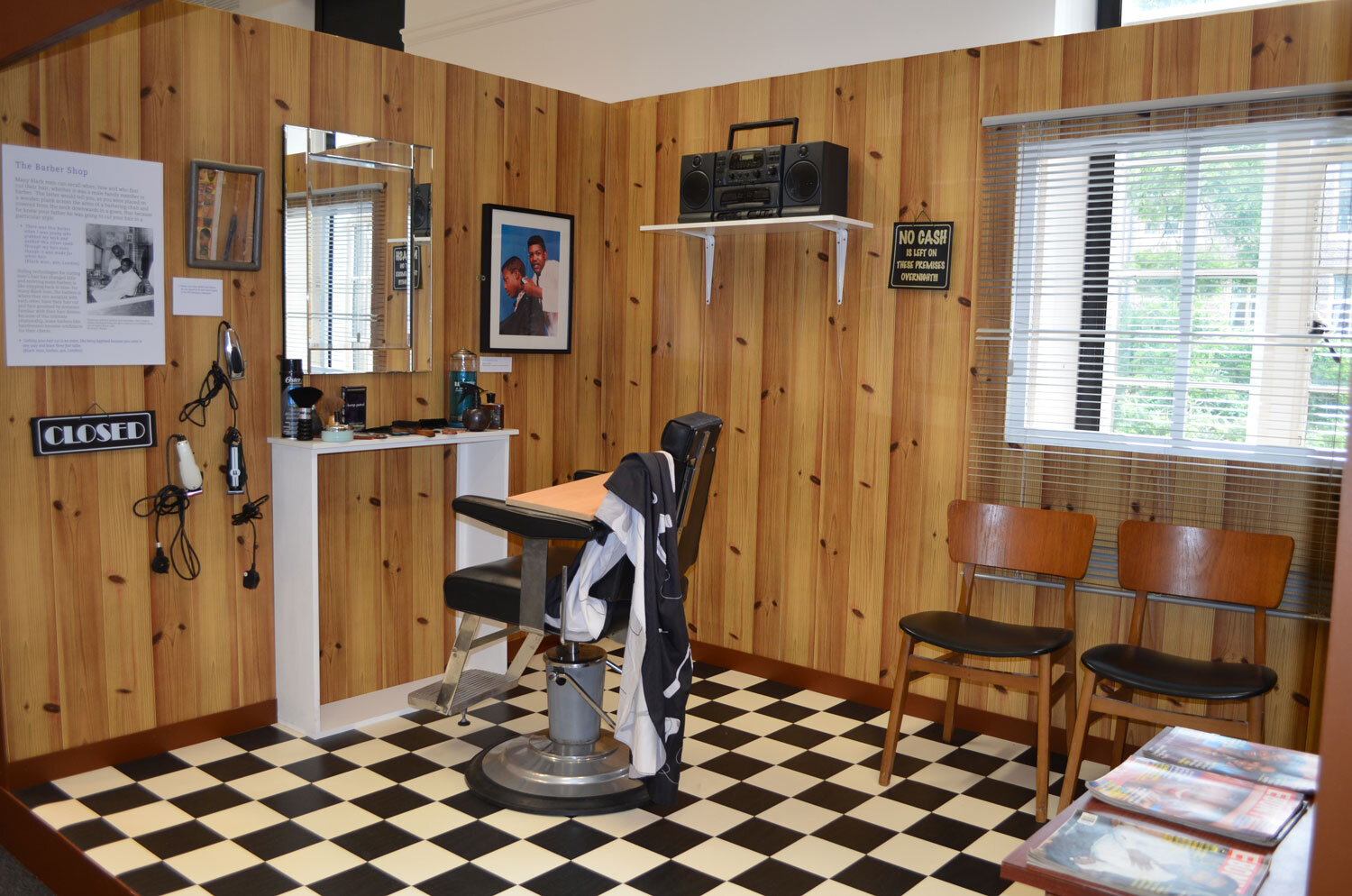My Hair: Black hair culture, style and politics (Origins of the Afro Comb)
Black men and women generally have little power in the wider society, but they agency in their styling, grooming and beautification of their bodies, especially their hair in response cultural politics about their bodies that have legacies in colonialism. This includes the ‘good hair, bad hair’ trope, where natural thick curly Black hair is portrayed as unattractive ‘bad hair’, and ‘good hair’ is associated with straightened European hair. Through globalization people of colour measure their proximity to whiteness in terms of the Western ideal of beauty as a white blonde slim middles class cis-gender female.
My Hair: Black Hair Culture, Style and Politics was an installation-based exhibition curated by McMillan at the Museum of Archaeology and Anthropology, Cambridge (July – September 2013) and ran alongside the Origins of the Afro Comb: 6,000 Years of Culture, Politics and Identity exhibition at the Fitzwilliam Museum.
My Hair consisted of three connected installations:
The ‘Cottage Salon’ in the Home that included a radiogram, glass cabinet and chair on which sat one white and two Black dolls. The home is where Black hair culture and styling begins with girls sitting on the floor between their mother’s legs having their hair combed or pressed with a hot iron comb.
The Barber Shop included a Belmont barber’s chair and the largely unchanged technology for cutting and styling Black men’s hair. The barber shop is not simply for cutting hair, but where men socialize, exchange stories, hear about latest news in the community and from ‘back home’ and discuss everything from religion to politics. Boys would be sat on a bench across the arms of the barber’s chair and told by the barber that because he knows their father then he will cut their hair in a particular style.
The Hairdressing Salon that included modern improvements on the hot iron comb technology that Black women have traditionally used to straighten their hair enables Black women to style hairdressing and training Black hair stylists. This is an equally gendered social institution where women get the latest gossip, share intimate information about themselves, give and receive achieve, and feel supported while their hair is being styled. Black women spend three times as much on their hair than their white female counterparts.
A mixed-media exhibition contextualized these installations with contemporary and archive images featuring the cultural politics of Black hair styling from afros to dreadlocks, from straightened to ‘Black blondes’ and included work from photographers Maxine Walker, Eileen Perrier, Raphael Albert, Colin Jones, James Barnor, Charlie Phillips, Vanley Burke, that were sourced through Autograph ABP. Other archive images came from Sandra Gittens, Lambeth Archives, Black Cultural Archives, as well as my own collection. Images of 19th century photographs of white people with white afro styled hair and considered freaks came from Ajamu, as well as British Pathe Newsreels were featured in the Origins of the Afro Comb exhibition.
Multi-media - a large projection screen there was film showing the hands of different Black hair stylists and barbers working on customers hair at Aquarius Hair & Beauty, based in Finsbury Park, London. Below this two visitors at a time could sit under two repurposed salon hair dryers and hear a series of Black hair story sound-bites
Background:
At the beginning of the twentieth century, Madam C.J Walker, an African American woman, become the first female millionaire producing, promoting and selling hair and skin care products for and to Black women.
Catering for a similar market, the British based Dyke and Dryden emerged as the largest Black-owned business in Europe during the 1970s. Dyke and Dryden would eventually be sold to American competitor Soft Sheen during the 1990s, in turn sold to L'Oreal.
Black hair is political because wearing certain styles, such as Afros, braids, dreadlocks can cause negative reactions in some social contexts.
It seems that white men and women can appropriate Black hair styles unproblematically, such as braids, dreadlocks, Afros, weaves and extensions, but if Black men and women use white hair styles they are accused of trying to look white.













